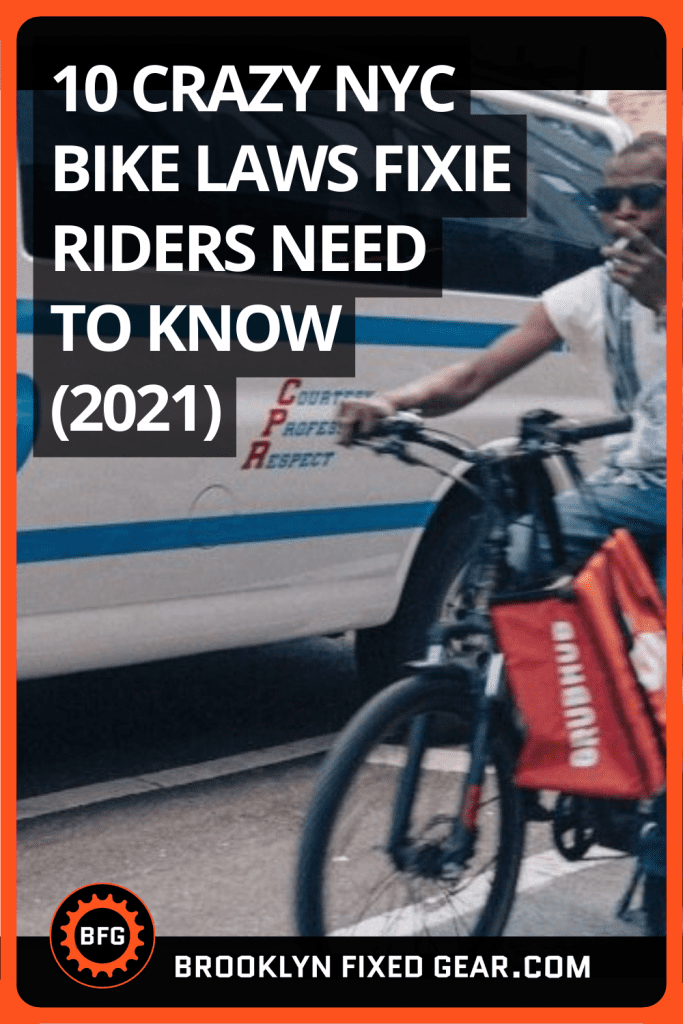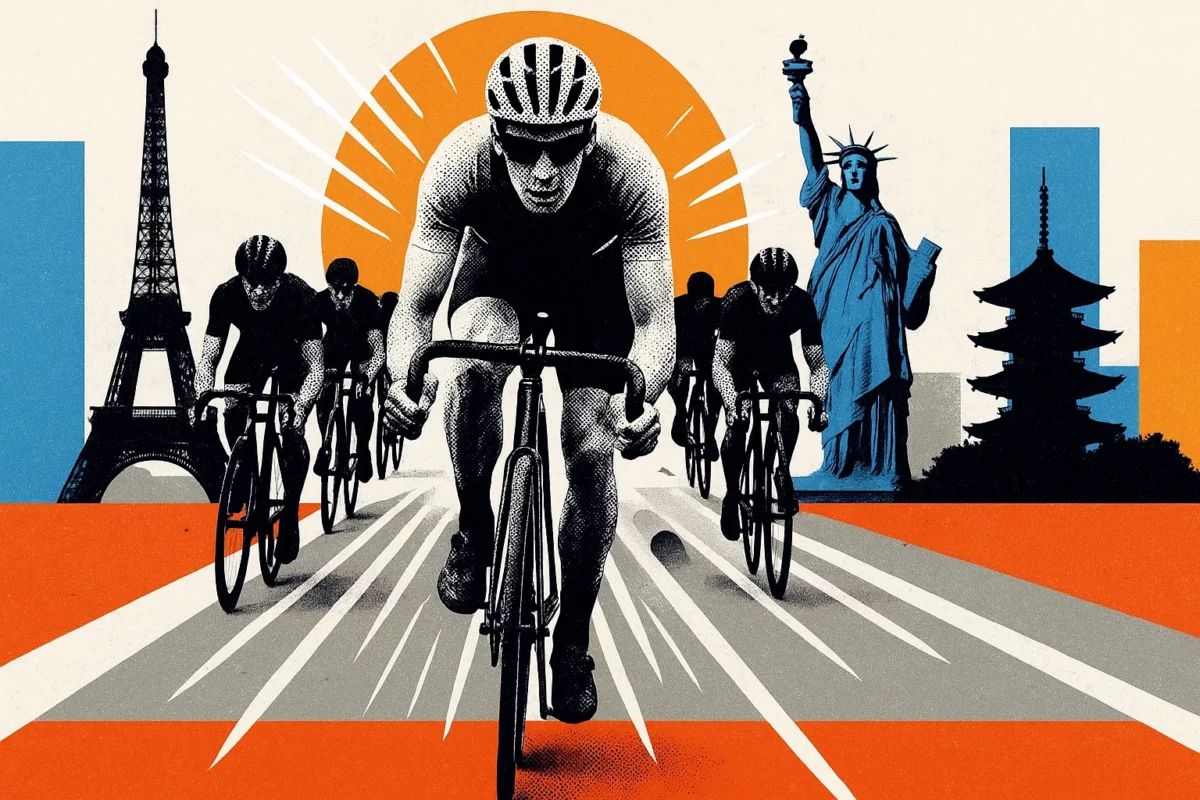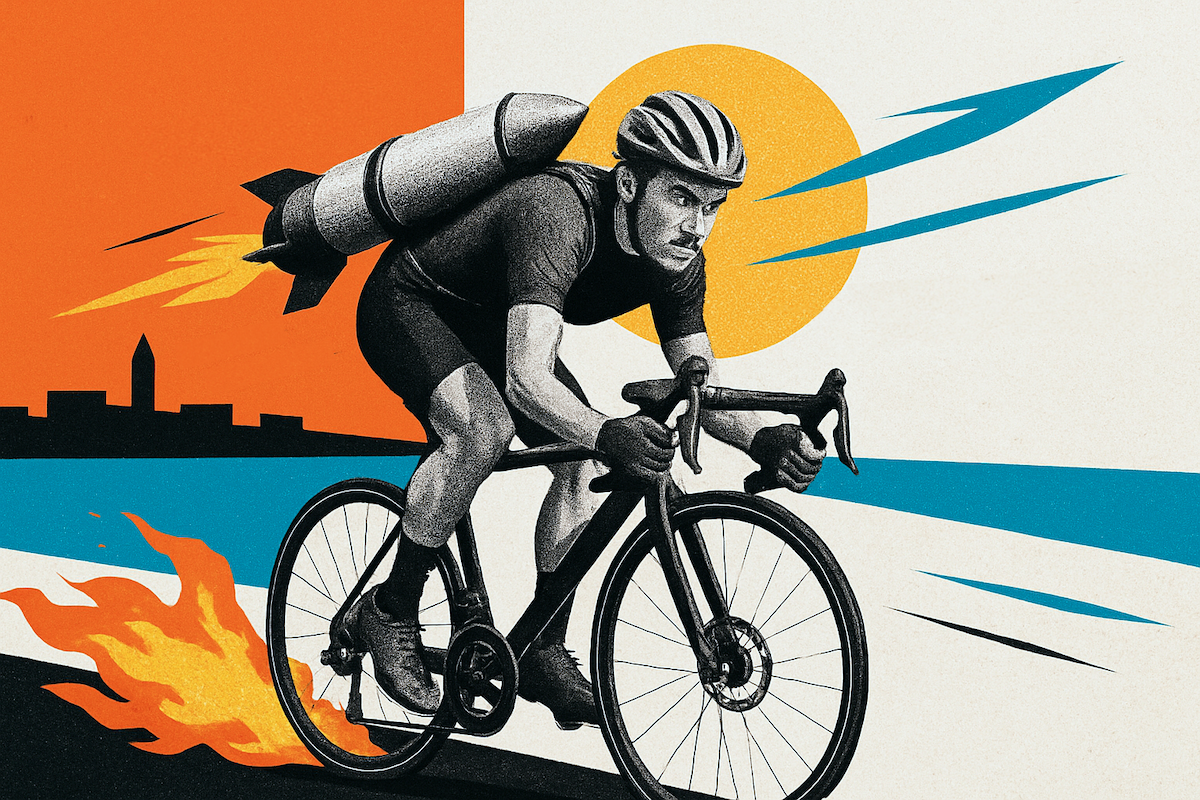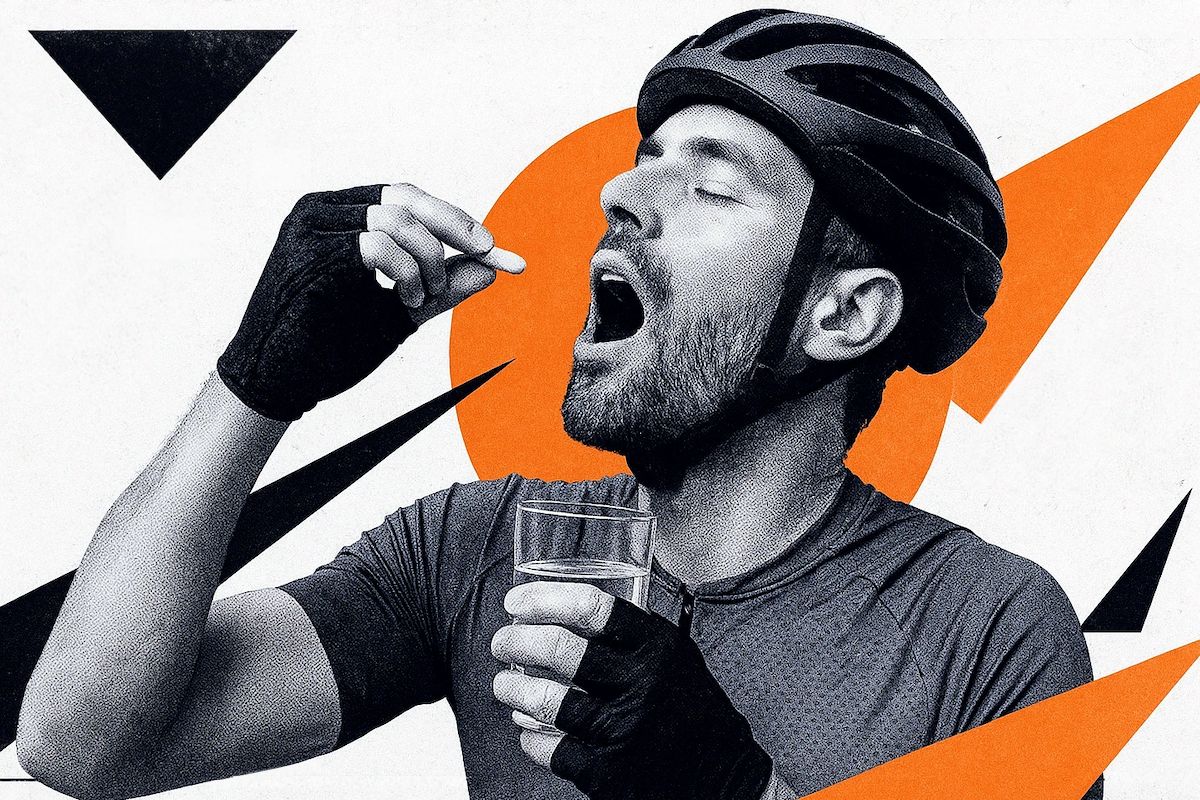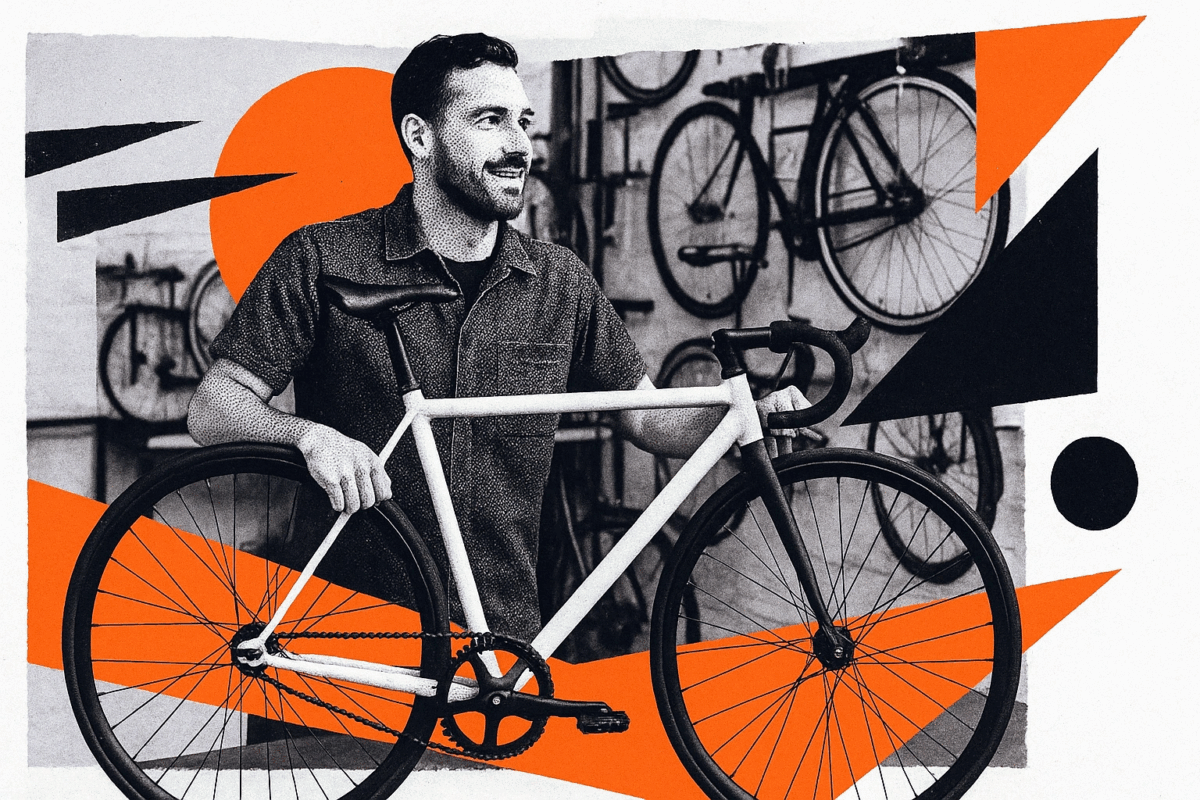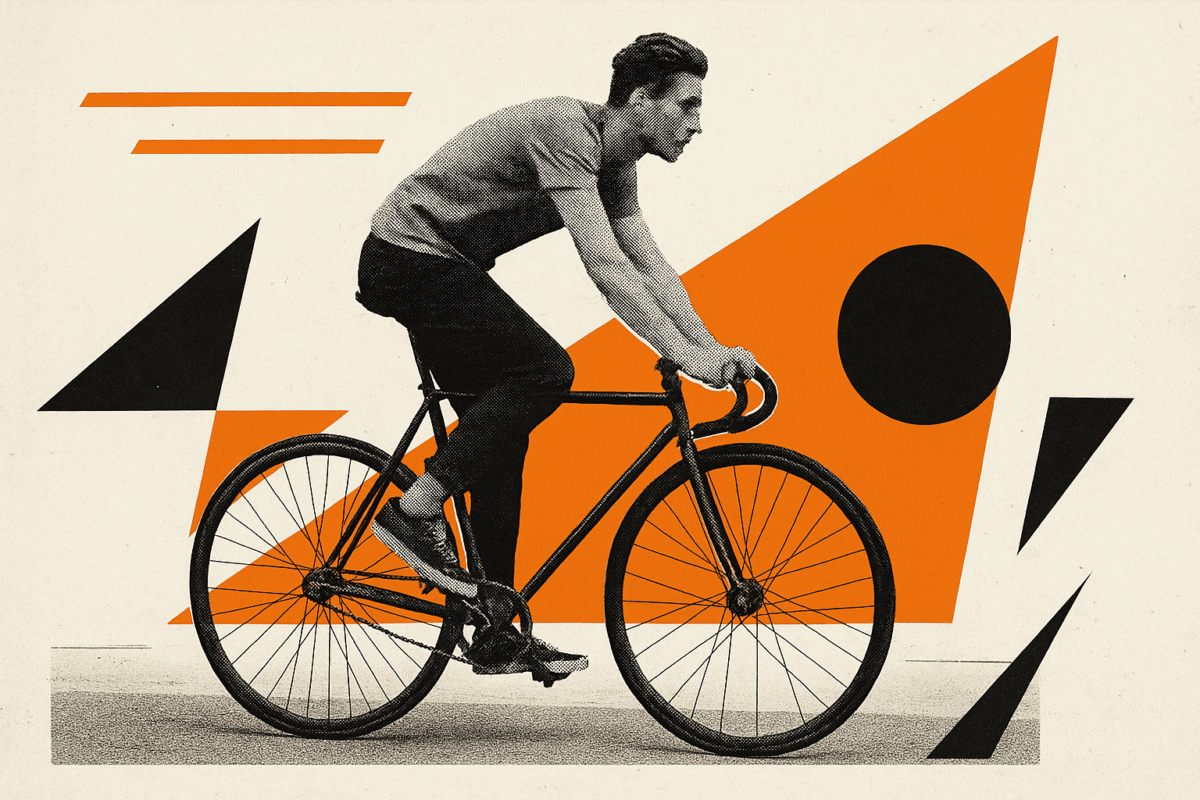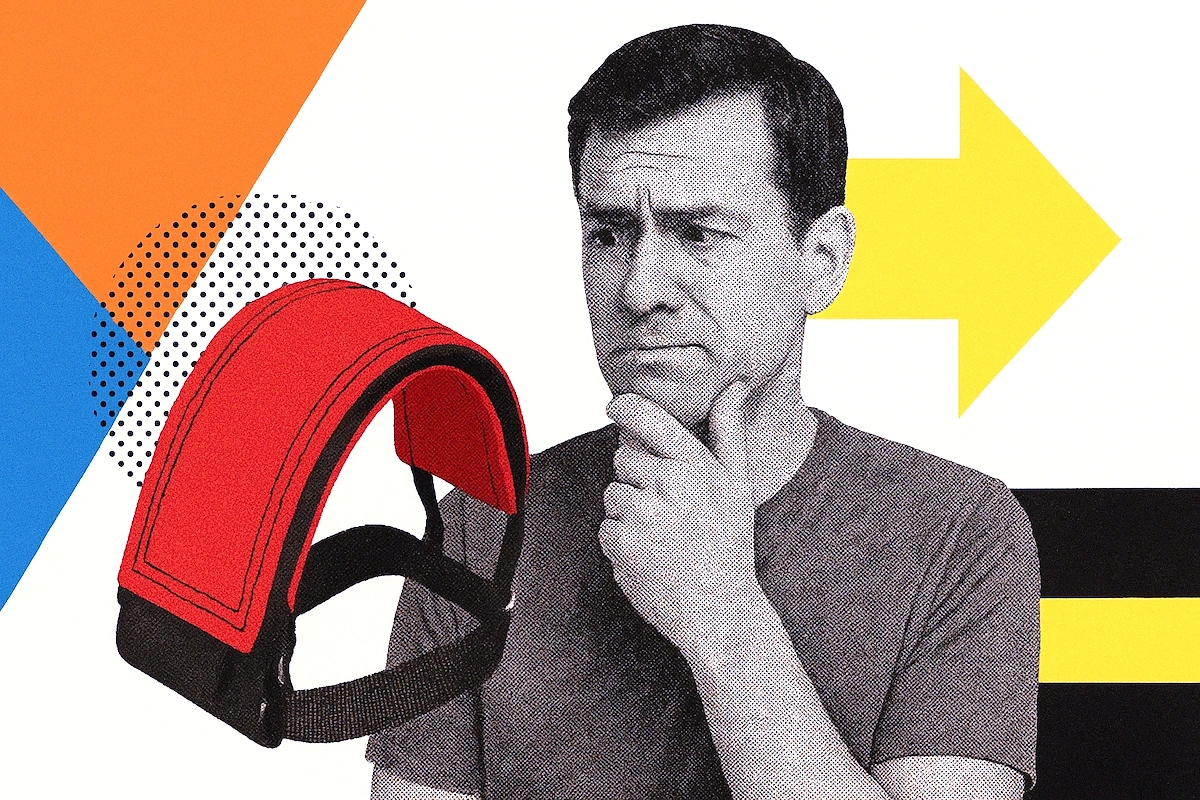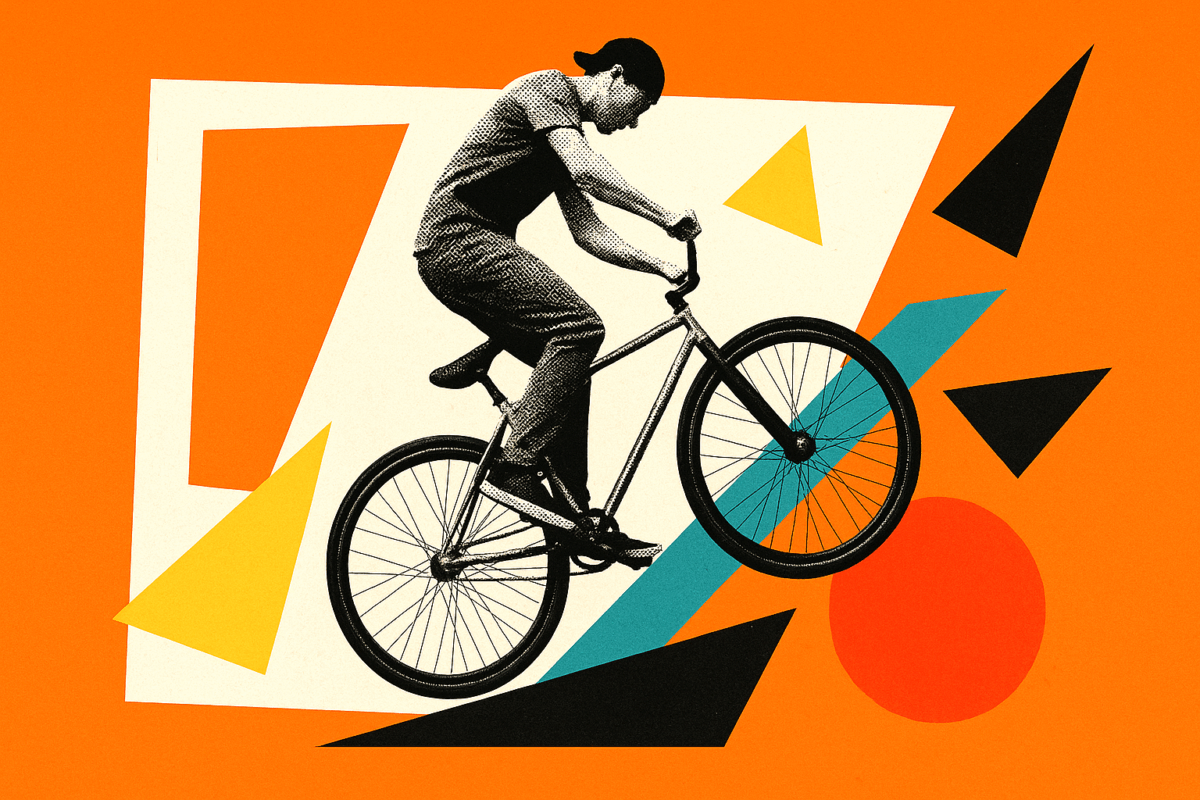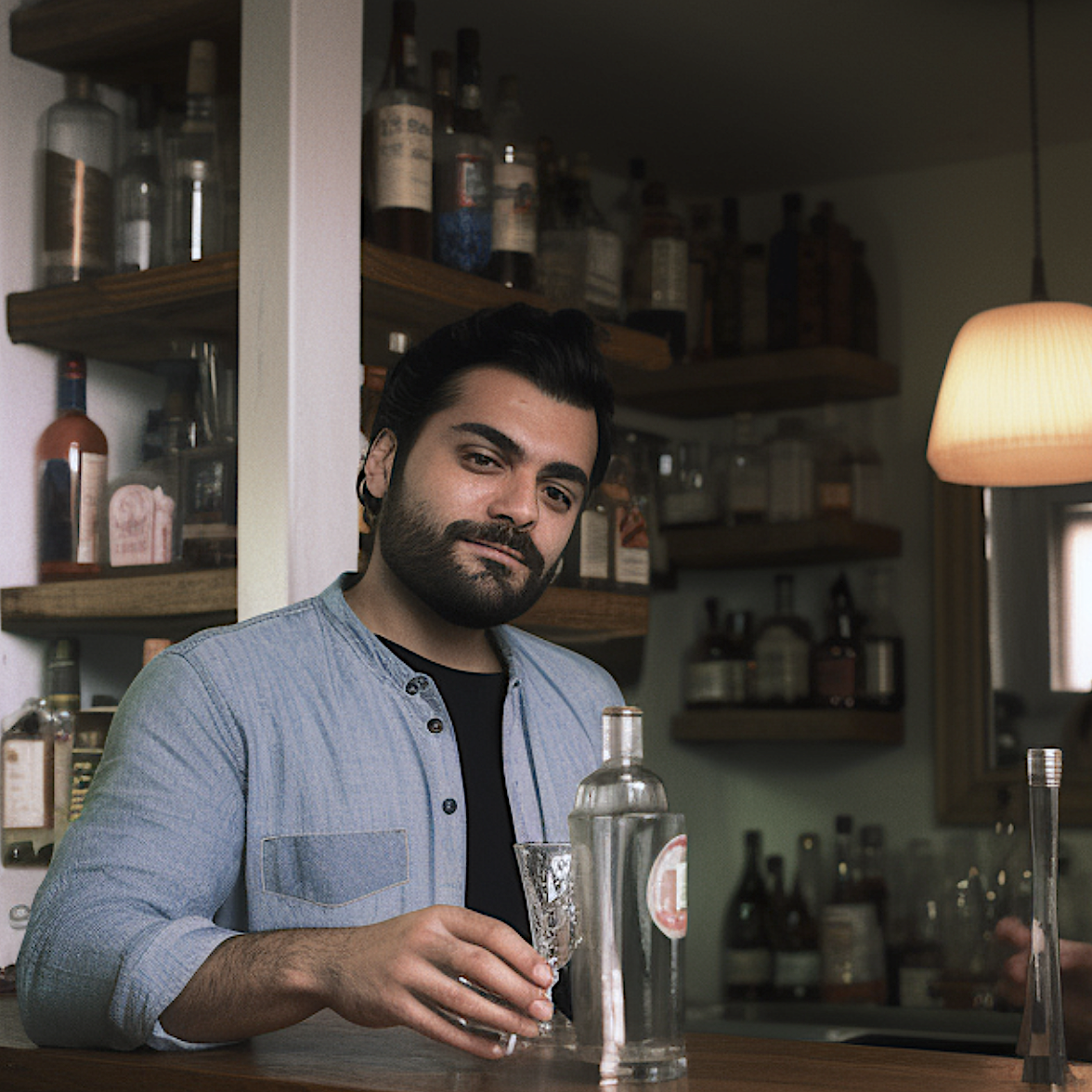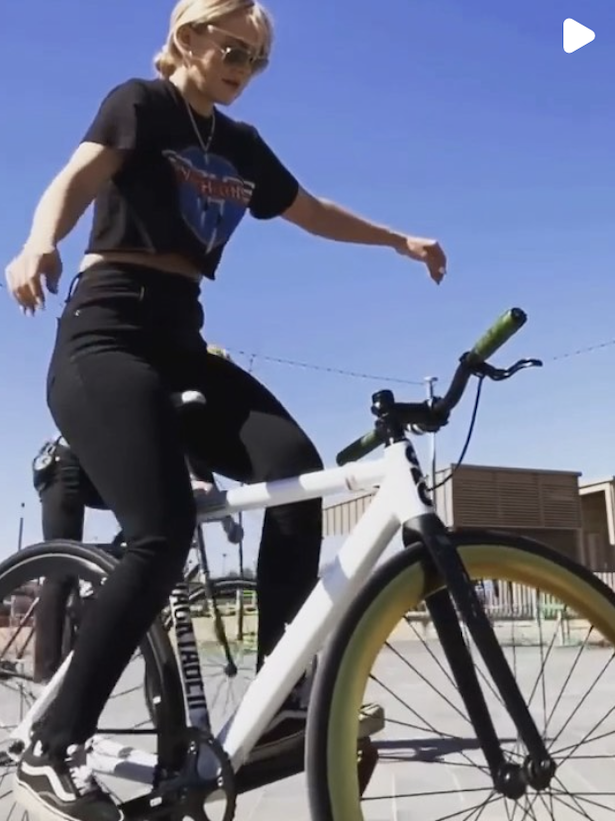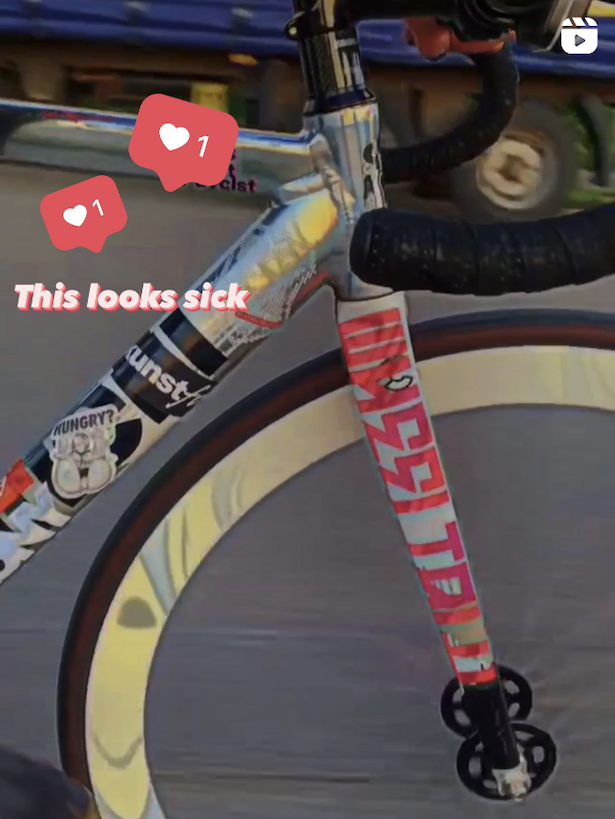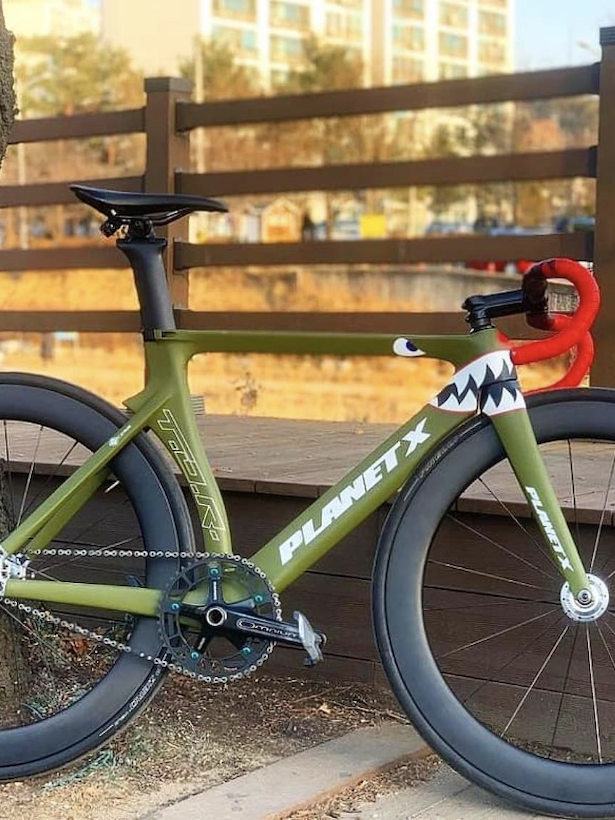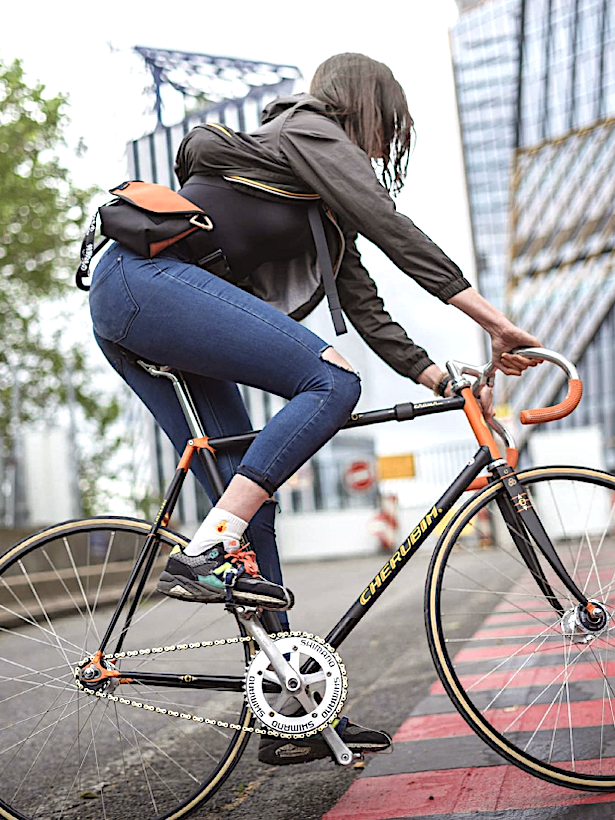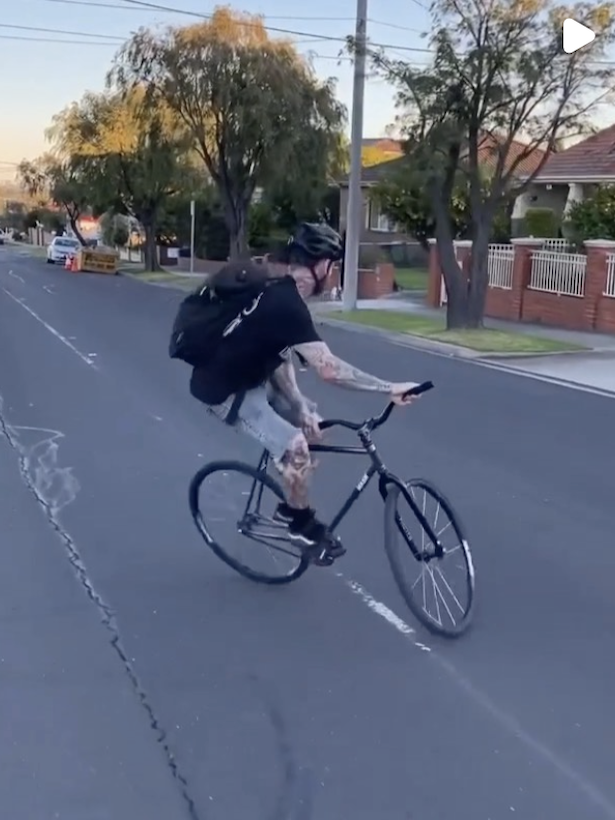
TL;DR:
- NYPD actually runs checkpoints specifically to ticket cyclists for missing bells and lights. Equipment violations start at $50+.
- Sidewalk riding can cost you $100-$300 and your bike gets confiscated. Police will impound your bike on the spot—especially in high-traffic areas like Midtown Manhattan and Williamsburg
- You MUST use bike lanes when available—riding in the street when a designated bike lane exists will get you ticketed. Also: one earphone is legal, two earphones = $50 ticket
I got slapped with a $50 ticket for something I didn’t even know was illegal. 😮 Turned out there are a bunch of NYC bike laws I’d been breaking for years—and you probably are too. 🤦♂️
That ticket sent me down a rabbit hole of discovering which rules actually matter and which ones cops ignore. If you’re worried about getting stopped while riding your fixie through Manhattan, you’re in the right place.
This post could save you hundreds of dollars in fines and the hassle of getting your bike impounded.
New York City Bike Laws You Need To Know
1. You Need a Bell—Yes, Really (And Cops Actually Check)
Here’s one that surprises everyone: NYC legally requires a bike bell on every bicycle. Not a suggestion. Not optional. Required by law under VTL 1236(b).

The bell must be audible from at least 100 feet away. Sirens and whistles? 🚫 Prohibited. You need an actual bell or horn that makes a clear, distinct sound.
And get this—NYPD actually runs checkpoints where they stop cyclists specifically to check for bells and lights.
In 2012, Streetsblog NYC reported on surprise checkpoints in Brooklyn where officers pulled over dozens of riders for missing bells. One cyclist commented:
“He explained that this was a checkpoint for enforcing bike safety, and that I was about to be issued a summons for failing to have a bell on my bike.

Did you know?
Equipment violations typically start around $50, but can climb higher depending on the judge. You can sometimes get the ticket dismissed if you install a bell, ask your local precinct to certify in writing that your bike is properly equipped, and bring that documentation to court.
2. Kids Can Ride on Sidewalks, But Only If…
While New York State doesn’t ban sidewalk riding outright, NYC is a different story. The city is one of the most crowded places on earth—thousands of pedestrians packed on every block.
Sidewalk riding is only legal if:
- The rider is 12 years old or younger
- The bike wheels are less than 26 inches in diameter
If you’re 13 or older? Stay off the sidewalk. Period.
According to Administrative Code § 19-176, violations carry a $100 fine for first-time offenders.
If you endanger someone while riding on the sidewalk, it becomes a misdemeanor with fines ranging from $100 to $300—and police can confiscate your bike on the spot.
I’ve seen cops impound bikes in Williamsburg for sidewalk riding. Getting it back requires going to the Environmental Control Board, paying your fine, and bringing a receipt to the precinct. Not fun.
| Violation | Fine | Bike Confiscation? |
|---|---|---|
| First sidewalk offense | Up to $100 | Possible |
| Sidewalk + endangerment | $100-$300 | Yes |
| Equipment violation (bell/lights) | $50+ | Rare |
| Infant under 12 months | $50 | No |
3. Carrying a Baby Under 1 Year Old? That’s Illegal
This one catches a lot of new parents off guard. Under VTL § 1238(b), children under 12 months old cannot ride on a bicycle in any capacity. Not in a front seat, not in a trailer, not in a cargo bike. Nowhere.
The fine? $50 if you get caught by NYPD.
Kids aged 1-5 years must be in a properly affixed child carrier and wearing an approved helmet.
The American Association of Pediatrics backs this up, recommending that babies develop sufficient neck strength (usually around 12 months) before experiencing bike rides.

Why the rule?
Infants can’t support the weight of a helmet, and the vibrations from riding can be dangerous for developing brains.
4. Only One Earphone Allowed (Not Two)
I learned this one the hard way. Got flagged down on Broadway heading downtown—$50 ticket for wearing both earbuds. Interestingly, i got the ticket at a bike check point. I thought I was totally in the clear. then Bam! I got stopped.
VTL § 375 24-a is crystal clear: you can wear ONE earphone max while riding. Both ears covered? That’s a violation.
The reasoning is safety—you need to hear traffic, sirens, car horns, and other cyclists.
Riding with headphones is one of the most commonly ticketed violations because it’s so easy for cops to spot.
Want to listen to music? Keep one earbud in and stay alert. Or just skip it entirely and stay aware of your surroundings. If you zone out while listening to music, skip the earbud so you can be alert in traffic.
5. You Must Stop Before Entering From Driveways/Alleys
This is one of those laws nobody knows about but is technically enforceable. VTL § 1234(c) requires cyclists to come to a full stop before entering any roadway from:
- Private driveways
- Alleys
- Over a curb
- Private roads
Yes, even if there’s no car coming. It’s the same rule that applies to motor vehicles.
Do cops ticket for this? Rarely. But if you blow through a driveway exit and cause an accident, this law will absolutely come back to bite you.
Better to slow down and check—takes two seconds.

6. No “Skitching” (Attaching to Moving Vehicles)
Under VTL § 1233, it’s illegal to attach yourself or your bike to any moving vehicle. This includes holding onto cars, buses, delivery trucks, or anything else on the road.
For those who don’t know, “skitching” is where you grab onto car bumpers and get pulled along. Extremely dangerous. Extremely illegal.
The law specifically states: “No person riding upon any bicycle… shall attach the same or himself or herself to any vehicle being operated upon a roadway.”
Don’t be that guy. 😬 Do we do it sometimes… Yeah. But like… don’t.
7. Packages Must Allow One Hand on Handlebars
VTL § 1235 says you cannot carry any package, bundle, or article that prevents you from keeping at least one hand on the handlebars.
Additionally, RCNY § 4-12(e) requires you to have your hand on the handlebars at all times.
This is a common issue for delivery workers who stack multiple bags or carry oversized items. 😕 Balance and control are seriously compromised when you’re riding no-handed through traffic.
Additional requirements: Sit on the bike’s seat, not the fender or the handlebars. Keep your feet on the pedals and never carry more people on the bike than it was designed for. Cops generally don’t ticket recreational riders for this unless you’re being reckless. But delivery cyclists? They get hit with this violation more often.
We will cover commercial/food delivery riders in a bit.
8. You Can Ride on Either Side of Wide One-Way Streets
Here’s one that actually works in your favor: Under 34 RCNY § 4‑12(p)(1), bicyclists may ride on either side of a one-way roadway that is at least 40 feet wide.
The state law VTL § 1234, which generally requires cyclists to keep near the right curb, is explicitly superseded within the city by the local rules.
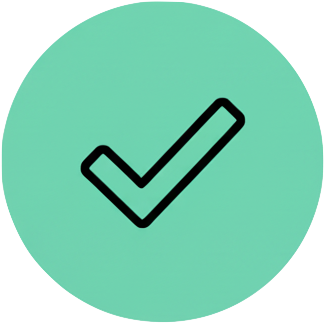
Pro tip!
If you’re on a wide one-way like 5th Avenue or Broadway, you can legally ride on the left side. Just be aware that most drivers don’t expect this, so stay visible and predictable.
9. You MUST Use Bike Lanes When Available
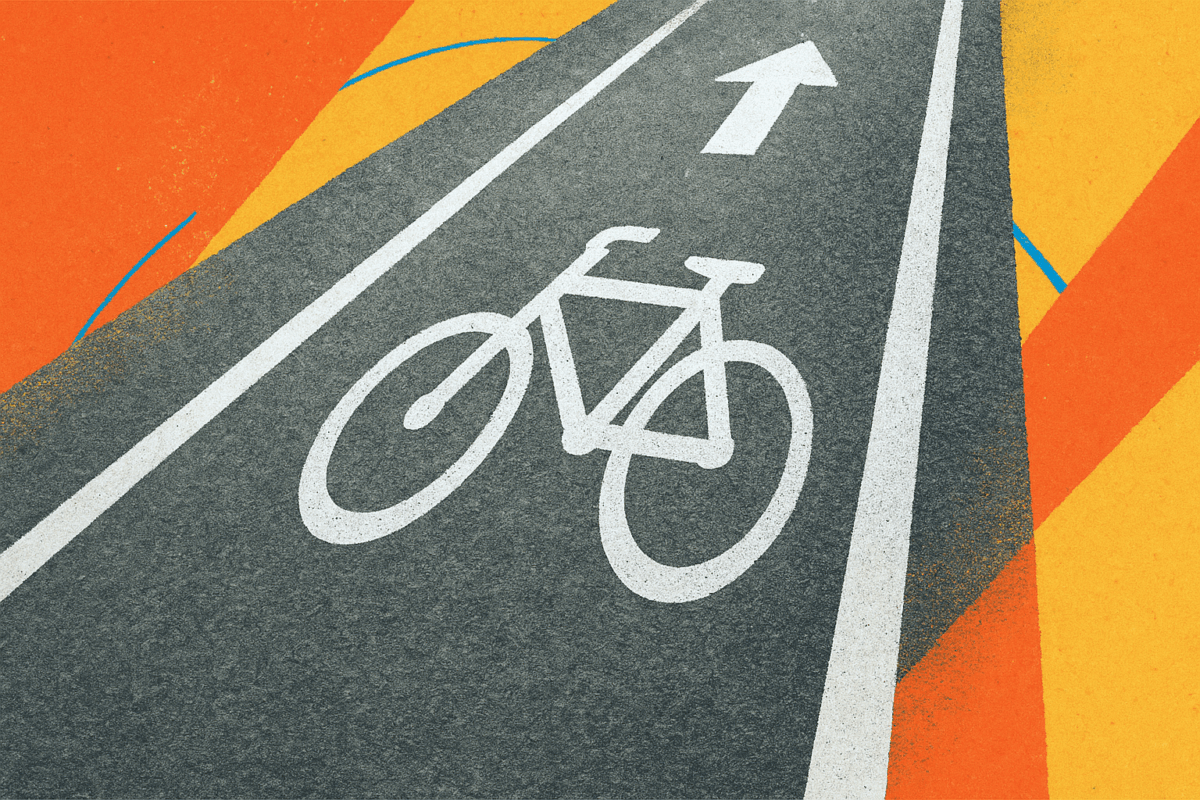
This is one of those bike laws that can get confusing. You can either ride your bike in a designated bike lane or share a lane with car traffic.
When there is a designated bike lane, you are required to use it under RCNY § 4-12(p).
When there is no bike lane, you use the same road that cars use. When a lane is wide enough for both cars and bikes to share, you are to ride on the right side of the lane.
However, if the lane is too narrow, you can ride in the middle of the lane, just like a car does.
Where should you ride if there’s no shoulder or bike lane? Position yourself several feet into the lane where motorists will see you. On narrower lanes (10 feet or less), take the center of the lane.
10. Pedestrians Always Have the Right of Way
This is the big question, right? This is what we all want to know when those pesky pedestrians are in our beloved bike lane.
Unfortunately for us cyclists, according to NYC bike laws, pedestrians always have the right of way under VTL § 1146.
So next time you want to have a mini freak-out over a crowded bike lane, remember that the cops will not be taking your side.
If you want to see some bike lane justice, take a look at this video which shows a brave cyclist taking back the bike lane on the Brooklyn Bridge.
11 Do You Need to Wear a Helmet When Riding a Bike?
No, adults do not need to wear a helmet when biking around the city. Crazy right? I’d expect NYC to be all about this.
However, it would be wise to do so. While it is considered safe to bike around NYC, accidents can still happen. So be on the safe side, and protect yourself with a helmet.
Kids under the age of 14 are required by law to wear helmets for safety (VTL § 1238).
You must wear a helmet if you ride your bike for a delivery company.
12. You Must Report All Accidents to Police
Under VTL § 1231, cyclists are legally required to report any accident that causes injury to another person or property damage to the police—just like motor vehicle drivers.
This means if you crash into someone, knock over property, or cause any damage, you cannot just ride away. Leaving the scene may be a criminal offense, not just a traffic violation.
What counts as reportable?
- Any collision resulting in injury to a person
- Damage to vehicles, bikes, or property
- Accidents involving pedestrians
Even if you think it’s minor, stop and exchange information. Failing to report may escalate to hit-and-run charges. 😬
13. No Riding on Expressways, Highways, or Interstate Routes
This one seems obvious, but it’s worth stating: under RCNY § 4-12(o), bicycles are strictly prohibited on:
- Expressways (like the FDR Drive, West Side Highway)
- Interstate routes
- Parkways and limited-access highways
- Any road with “No Bicycles” signage
These roads are extremely dangerous for cyclists—high speeds, no shoulders, and zero tolerance from law enforcement. If you accidentally end up on one, exit immediately at the next available ramp.

Safety Warning
Riding on expressways isn’t just illegal—it’s life-threatening. Cars travel at 55-80+ mph with no expectation of seeing cyclists.
14. Park Riding is Restricted to Designated Areas Only
According to RCNY § 4-14(c), you cannot ride bikes anywhere you want in NYC parks. Cycling is only permitted in designated areas—typically marked bike paths and park drives.
Where you CAN ride:
- Paved bike paths (like the Central Park loop)
- Park drives open to bikes during specific hours
- Areas with “Bicycles Allowed” signage
Where you CANNOT ride:
- Pedestrian walkways and paths
- Grassy areas, lawns, gardens
- Playgrounds and sports fields
- Any area marked “No Bicycles”
Parks like Central Park, Prospect Park, and Riverside Park have clearly marked bike lanes—stick to those. Riding on pedestrian paths can result in fines and getting kicked out of the park.
16. Beaches and Boardwalks are Off-Limits
Dreaming of a scenic beach ride along Coney Island or the Rockaways? Think again. NYC law prohibits bicycles on:
- All NYC beaches (including sand areas)
- Boardwalks during peak summer hours
- Designated pedestrian promenades
Boardwalk exceptions: Some boardwalks allow bikes during early morning hours (typically 5 AM – 10 AM) before crowds arrive. Check posted signage for specific restrictions.
Popular spots like the Coney Island Boardwalk and Rockaway Boardwalk are strictly enforced during summer. Park rangers and NYPD will stop you and issue fines for violations.

Pro Tip:
Use the bike paths adjacent to boardwalks instead. The Ocean Parkway Greenway runs parallel to Coney Island and offers beautiful ocean views without breaking any rules.
Food Delivery Worker Specific Rules
If you deliver food by bike in NYC, you’re subject to way more regulations than regular riders. Administrative Code § 10-157 lays out requirements that include:
Commercial cyclist requirements:
- Wearing a business ID number (visible from 10 feet, with numbers at least 1 inch tall)
- Reflective vest with company name
- Completing a bicycle safety course before making deliveries
- Helmet meeting CPSC standards per 16 CFR 1203 (provided by employer)
- Carrying a numbered ID card with photo, name, home address, and business information
Businesses must also maintain detailed logbooks tracking every delivery, including cyclist ID, origin, destination, and date. They file annual reports with NYPD listing all bicycles and employees.

Commercial cycling enforcement is way stricter than recreational riding. If you work for DoorDash, Uber Eats, or any delivery service, these rules apply to you.

Important…
Delivery workers using e-bikes must comply with additional commercial cycling regulations. Non-compliant e-bikes are frequently confiscated by NYPD.
Where Can I Find the Most Updated Bike Laws?
The Department of Transportation will have all the most updated information regarding bicycle legislation in NYC. You can also read the official information from the Safe Bicycling in New York City manual here.
Always check the NYC DOT website for the most current regulations, as laws and enforcement priorities can change. When in doubt, ride defensively and follow traffic rules.
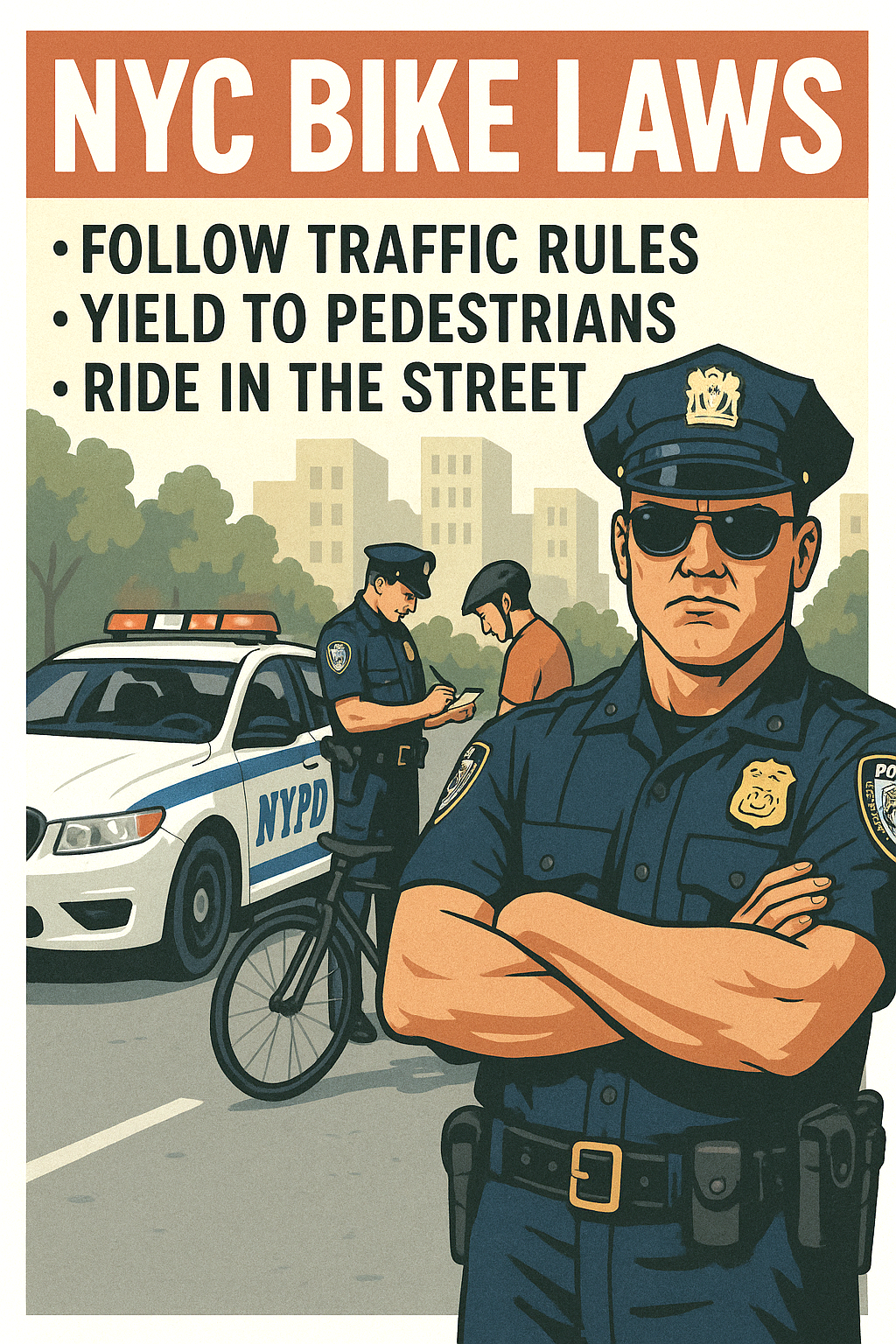
How Likely Is It to Get a Citation?
Truthfully, the typical New York cyclist is very unlikely to get a ticket for any of the violations listed here. Likewise, a police officer, especially if they are in a vehicle, is unlikely to pull you over because of a bike violation.
That being said, if you break any bike laws on a bike lane, you dramatically increase your chances of getting a ticket. In addition, the NYPD occasionally stations uniformed police on bike lanes specifically to give tickets, so stay on the safe side and always obey the bike laws.
More than 10,000 cycling tickets are issued annually in NYC. While that sounds like a lot, there are approximately 2 million cyclists in the city. Your odds are low—but when enforcement happens, it happens hard.
Bike Confiscation is Real
This is the one that shocks people: police can actually impound your bicycle for certain violations—primarily sidewalk riding.
According to Administrative Code § 19-176, if you’re ticketed for sidewalk riding (especially if you endangered someone), cops can seize your bike immediately. It gets stored at the local precinct.
To get it back:
- Go to the Environmental Control Board (ECB) for a hearing
- Pay your fine
- Get a receipt
- Take the receipt to the precinct
- Retrieve your bike
The whole process takes days and can cost hundreds depending on the violation. Some people have reported waiting over a week to get their bikes back.

Critical warning!
Police can confiscate your bike for sidewalk riding. It’s not an empty threat—impounds happen regularly, especially in high-traffic areas like Midtown Manhattan and Williamsburg.
Frequently Asked Questions
Bicyclists should use the same turn or through lanes as motorists. Approach intersections like a car would and prepare to stop at all traffic lights and stop signs. Position yourself in the center of the left turn lane if you’re turning left—you’ll be most visible there. Use proper hand signals well in advance of your turn. It’s generally safer to “take the lane” so you don’t get passed until you’ve passed through the intersection.
Ride several feet into the lane where drivers will see you—don’t hug the curb. On lanes 10 feet wide or less, take the center of the lane. It’s legal and safer than getting doored by parked cars.
Yes! Bicycles and motor vehicles are subject to the same traffic laws. You must stop at red lights and yield to pedestrians—just like drivers. You must also report any crashes to police. Bicycles are subject to all traffic laws under VTL § 1231.
Officially yes. According to NYC bike laws (VTL § 1237), you must use hand signals. Check out our article on how to use hand signals.
Yes. Bikers must outfit their bikes with a white headlight and red tail light for night riding. Reflectors and a bell are also required. Your bike must have a seat, functioning pedals, and brakes.
Sit on the bike’s seat, keep your feet on the pedals, never carry more people than the bike is designed for, always keep at least one hand on handlebars, never attach to moving vehicles, and wearing more than one earphone is prohibited.
Final Thoughts
At the end of the day, it all comes down to what you are comfortable with. In short, use caution while biking in New York City and you should be fine. Just make sure you know the biking and cycling laws before setting out on your bike ride.
Look, I get it—some of these laws seem ridiculous. A bell? Really? But after getting that $50 ticket, I realized the city isn’t messing around.
The good news? Most violations are avoidable. Throw a bell on your bike, stay off sidewalks, use bike lanes when available, and keep your feet on the pedals. You’ll be fine.
The actual enforcement is random—cops might ignore you for months then suddenly set up a checkpoint. Better to just follow the rules and ride confidently knowing you won’t get hassled.
Stay safe out there. And seriously, get a bell.
So, how many of these laws have you broken today? Let us know in the comments below (we read and reply to every comment). If you found this article helpful, check out our full blog for more tips and tricks on everything fixie. Thanks for reading, and stay fixed.
Sources and references
- NYC Department of Transportation – Bicycle Rules
- New York State Vehicle and Traffic Law
- NYC Administrative Code § 19-176
- NYC Bicycle Laws – Comprehensive Guide
- Administrative Code § 10-157 – Commercial Bicycle Requirements
- NYC DOT – Commercial Bicycling Regulations
- Biking on Sidewalks: Is It Legal in New York?
- Articles about Fixed Gear and single-speed Cycling and Equipment
- Fixed-gear bicycle – Wikipedia
